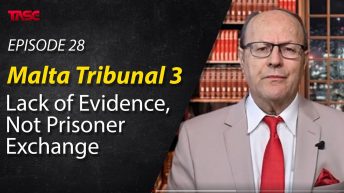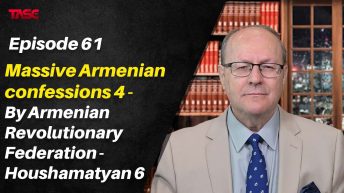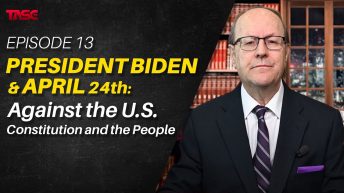Professor Justin McCarthy’s book, Turks in America, documents that prejudice against Turks had already existed in Europe and America for centuries. Some date it back to the conquest of Constantinople in 1453 which not only changed its name to Istanbul but also marked the end of the middle-ages and the beginning of the Renaissance and the Age of Discovery. Others go further back to the times of the Crusades between 1095 and 1291 when a series of religious wars were initiated, supported, and sometimes directed by the Latin Church. The best known of these Crusades are those waged to liberate Jerusalem from Islamic rule. Still others go even before that to Seljuk Turks’ times. In all these cases, Turks were a powerful presence in the tricontinental geography extending from eastern and southern Europe to Central Asia, from Southern Russia to the Middle east and North Africa, from Mediterranean to the Indian Ocean. There were many religious wars and Turks carried the flag of Islam which may explain why Turks were defamed and demonized for centuries in the Christian West. By the time of World War I, however, anti-Turkish prejudice was cultivated and expanded by two cooperating agencies–the American missionary establishment and the propaganda office of Great Britain. During WWI, missionaries had undertaken a massive effort to vilify Turks. This was partly an extension of a long tradition of rhetoric against Muslims. Another motive was unique to the period of the world war. By the end of the 19th century, the efforts of the American Board of Commissioners for Foreign Missions had evolved into a Mission to the Armenians. Even though other Christian groups benefitted from missionary schools, most students in the schools and nearly all the converts to Protestantism were Armenians. With the coming of war between Ottomans and Russians and intercommunal war between Armenians and Muslims, the missionaries saw the imminent destruction of their Mission, and they felt great sympathy for Armenian losses. They organized massive relief efforts to aid Armenian and Assyrian Christians. Propaganda against Turks was a tool to increase donations. The missionary establishment hoped for an Armenian/Russian triumph in the war. They therefore made use of their considerable influence in American society to sway popular and political will against the Turks. The missionaries were the willing helpers of the British propaganda effort. Missionary propaganda and British propaganda fed each other and depended on each other. British wartime propaganda was in the hands of the Foreign Office. A War Propaganda Bureau was established by the Foreign Office in 1914 at Wellington House, with C.F. Mastermann as its director. British Propaganda came to be known as “Wellington House” which recruited some of the best minds in the British government and academia, including the historian Arnold Toynbee. The United States was the most important focus of British propaganda. America was important as a supplier of goods, a moral force, and a potential ally against Germany. American newspapers based their stories on British materials, because the British had destroyed German transatlantic cables, and British cables were the only way to get news to America. Russian persecution of the Jews was well publicized in America which alarmed the British in case it jeopardized friendly relations between the Allies and America. The British Prime Minister Lloyd George ordered the Propaganda Office to stress “the futility and immorality of the Turk” and “above all, his massacres of all the industrious population.” Viscount Bryce was the right choice to author propaganda aimed at Americans. He had served as a popular British ambassador in Washington and had many friends in American political circles, among them President Woodrow Wilson. While the British propaganda against the Germans has been thoroughly studied and labelled propaganda, the propaganda against the Turks has never been put to the same scrutiny. Among the main sources of atrocity stories, 59 of the 150 accounts in Bryce’s book were written by missionaries; 52 were written by individual Armenians or were copied from Armenian newspapers. Most incredibly, 7 of the 150 documents had been forwarded by the Dashnak Party, which had organized rebellions against the Ottoman government for decades. One can see the connections between deep-seated Orientalism and the persistent construction of the stereotype. Politically motivated texts, produced during the First World War as war propaganda, unethically and unfairly portrayed Turks as the enemy of civilization.
Myths and Realities




Add comment